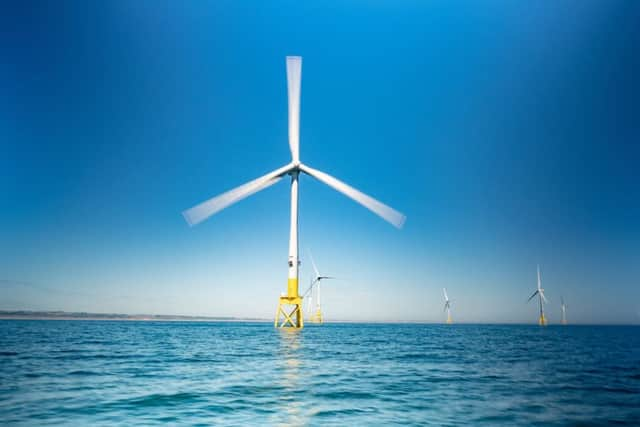Seabird collision study at Trump course windfarm


The research will be carried out at the 11-turbine European Offshore Wind Deployment Centre (EOWDC) in Aberdeen Bay.
It will monitor the activities of northern gannets, black-legged kittiwakes and large gulls such as the great black-backed gull and herring gull as they commute between nesting and feeding sites during the breeding season.
Advertisement
Hide AdAdvertisement
Hide AdThe aim is to discover more about their habits and techniques to avoid crashing into rotor blades.
It will be the first time analysis of this kind has been carried out during the breeding season and on such a large scale.
The EOWDC’s 8.8-megawatt turbines are the world’s most powerful offshore devices.
The scheme is connected to the grid and generates enough renewable electricity to power 80,000 homes – which equates to 70 per cent of households in Aberdeen.
The turbines are built on state-of-the-art suction-bucket foundations that do not require drilling into the seabed and can be easily removed at the end of the wind farm’s operational life.
The three-year project is part of a £3 million scientific programme at the EOWDC, which is supported by a panel of experts that includes RSPB Scotland, the Joint Nature Conservation Committee, Marine Scotland Science and Scottish Natural Heritage.
Swedish firm Vattenfall, owner of the pioneering demonstration facility, is now looking for bird experts to join the research team.
“Yet again the EOWDC demonstrates its cutting-edge credentials with this significant investment in seabird research,” said Danielle Lane, the firm’s UK country manager.
Advertisement
Hide AdAdvertisement
Hide Ad“The industry, decision-makers and ornithology specialists rightly take great care when assessing the impact of offshore wind turbines on bird populations. The more data we have, the more confident that decision making can be.
“That’s why we expect this research, combined with others, to boost understanding and improve collision-prediction models.
“This will go a long way to helping smooth the path for fossil-free offshore wind to make a telling contribution in the fight against climate change.”
Aly McCluskie, senior conservation scientist with RSPB Scotland, said: “There is currently considerable uncertainty in our understanding of how birds behave in the vicinity of wind turbines, and we need to greatly improve this understanding in order to be able to accurately predict and prevent adverse impacts on bird populations.
“The UK is currently undergoing an unprecedented expansion in offshore wind farm development, and while we welcome the urgent transition to renewable energy to tackle climate change, it is crucial that this should not be at the expense of our wildlife.
“This project will help to fulfil our ambitions for offshore renewable deployment to happen in harmony with nature.”
